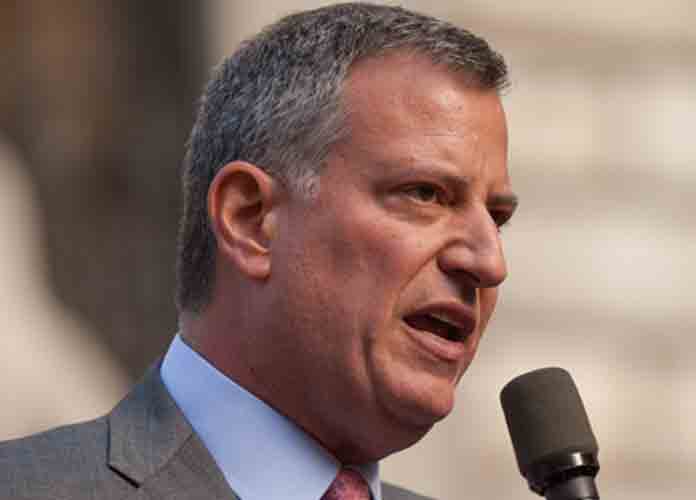Mayor Bill De Blasio Noticeably Absent During City’s Blackout
New York City Mayor Bill de Blasio was noticeably absent during the blackout that swept much of the citiy’s West Side on Saturday, drawing criticism from many New Yorkers and his fellow city officials.
When the power outage was first reported this weekend, de Blasio was in Waterloo, Iowa, delivering a stump speech in an attempt to gain national recognition for his 2020 campaign bid. When first notified of the blackout, de Blasio told reporters in Iowa that he did not have enough information on whether or not his presence was needed, and therefore was still debating returning to New York City. When it became evident that the events had turned into a crisis and de Blasio decided to leave Iowa, there were no more flights out of the state. The mayor was forced to take a four-hour drive to Chicago and wait until Sunday morning to board a flight heading home. In the meantime, he stayed at a local hotel and gave an interview to CNN at 9 a.m. He finally arrived home 13 hours after power had been restored to the city.
While the city’s mayor was stuck on the campaign trail, other members of NYC’s government stepped in to fill the void. Corey Johnson, the City Council speaker, provided frequent Twitter updates on the state of the blackout. He also attended an emergency government meeting with elected officials such as the city comptroller Scott Stringer, the public advocate Jumaane Williams, and the Manhattan borough president Gale Brewer.
Gov. Andrew Cuomo deployed 200 state troopers and 50 portable light towers in order to help keep the peace and reduce the tensions often caused by blackouts. He traveled to the city himself and that night was inspecting the power substation thought to be the cause of the blackout.
Subscribe to our free weekly newsletter!
A week of political news in your in-box.
We find the news you need to know, so you don't have to.
Noticeably absent from this plethora of officials was the mayor, which rubbed many prominent New Yorkers the wrong way. In an interview with CNN on Sunday, Cuomo said, “Mayors are important. Situations like this come up and you have to be on site, I believe that.”
“I’m governor of New York, I have been for eight years,” he added. “I can count the number of times I leave the state, basically on my fingers.”
“When the mayor walks in the room, he or she is the one in charge,” said Stringer, the city’s comptroller. “It is just better when the guy in charge is in the house.”
SLIDESHOW: TOP DEMOCRATS RUNNING FOR PRESIDENT IN 2020
De Blasio defended himself in a news conference in Manhattan on Sunday, saying, “I want people to understand that in this job and any public C.E.O. today, you have to take charge wherever you are and I did that,” referencing his claim that he was in control of the city even when in Iowa. “In terms of the decision, as soon as it became clear that we did not have an immediately resolvable crisis, I started moving.”
Get the most-revealing celebrity conversations with the uInterview podcast!







Leave a comment